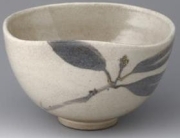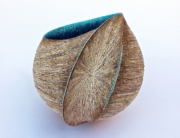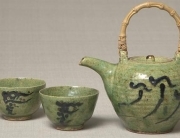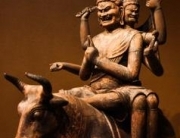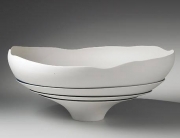Lacquers master Shibata Zeshin
With a career transition of Japan before decaying feudal system to the modern nation Zeshin Shibata (1807-1891) was an exceptional artist, reaching the peak of paint and lacquer. Nezu Museum exhibition “Shibata Zeshin: From Arts lacquer painting” presents 139 objects from arguably the most talented artists of the 19th century largely in Japan.
|
|
| Urushi-e lacquer paint Album (19th century). |
Born in Edo (now Tokyo), Zeshin joined the studio of the artist paint Koma Kansai II (1766-1835) as an apprentice at the age of 11 years there learning detailed methods of using tree sap to create surface decoration soft and beautiful. He then moved to Kyoto to study Maruyama-Shijo School of painting, which, combined with Western naturalism East Asian brush. This training is the foundation of his intellectual and aesthetic sophisticated art.
Back to Edo, Zeshin established his career in the last decades of the Edo period (1603-1867), creating paintings and luxury goods such as Boi painted your writing. Since 1868, Japan has sought to establish itself as a global power player in the market and international art, and the elegant fusion of tradition and modernity in the work is Zeshin became popular with the public occidental.Par Therefore, many of the best examples of the work Zeshin, especially its urushi-e (lacquer) are in collections abroad .
Despite substantial commissions of the imperial house and the Meiji government Zeshin was largely forgotten by his countrymen after his death. It is possible that the ability to move freely Zeshin between the fields of art and craftsmanship means that, until recent years, it has been seen as belonging to no.
The exhibition opens on more than 100 lacquerware, including many of the techniques developed by Zeshin films to simulate the appearance of wood, ink sticks, or bronze. “Tiered Candy Box crows and egrets” is representative of the sensitivity Zeshin regarding the shape and surface decoration. Flocks of crows and egrets rendered in black lacquer and silver explode from the bottom of a box or straight. The effect is at once dark, lively, and terribly chic.
| “Box Sweets flying crows and egrets” (19th century) Tokyo National Museum |
The next section explores the experiences of Zeshin in urushi-e executed on paper and hanging scrolls album to evoke the splendor of Western oil painting. Although urushi-e failed to thrive after the death Zeshin, these paintings are unconventional evidence of a restless spirit attempt to redefine traditional media.
Before reaching fame as an artist lacquer Zeshin was a respected painter of hanging scrolls and screens. Landscapes, including literary and folkloric themes and images auspicious, such as cranes, the last section of the exhibition presents paintings characterized by lightness ; mind. Many include kakihy ō s o (painted fasteners) the border “Hina Dolls” is a space filled with lacquered miniatures accoutrements for poupé , girls day are shown in the central image.
Ultimately, however, we remember that Zeshin Japan artist par excellence lacquer, and this exhibition is a timely reflection of his original vision and superb skills.


